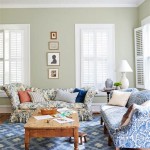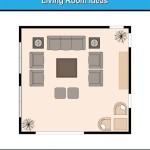Side Stands: Functional Elegance for the Living Room
Side stands, also commonly referred to as end tables or accent tables, are versatile pieces of furniture that enhance both the functionality and aesthetics of a living room. They serve a multitude of purposes, from providing a convenient surface for lamps and beverages to offering storage solutions and contributing to the overall design scheme. The adaptability of side stands makes them an indispensable element in creating a comfortable and well-organized living space.
The term "side stand" encompasses a wide range of designs, materials, and sizes. This diversity allows for selection based on specific needs and preferences. Understanding the various types and their potential applications is paramount in making an informed decision that complements the existing décor and maximizes utility.
Functionality: Addressing Practical Needs
The primary function of a side stand is to provide a readily accessible surface within the living room. This surface is often used for holding lamps, providing ambient and task lighting necessary for reading or relaxation. The placement of a lamp on a side stand near a sofa or armchair creates a designated reading nook, improving the usability of the space.
Beyond lighting, side stands offer a place to set down beverages, snacks, or remote controls. This prevents clutter on larger surfaces like coffee tables and minimizes the risk of spills on upholstered furniture. The height of the side stand is crucial in this context; it should be approximately level with the arm of the adjacent seating to facilitate easy access.
Many side stands incorporate storage elements, such as drawers, shelves, or cabinets. These storage solutions are particularly useful for concealing clutter, such as books, magazines, charging cables, or small electronics. A side stand with a drawer can serve as a convenient place to store reading glasses or writing implements, keeping them within easy reach but out of sight when not in use.
The strategic placement of side stands can also influence the flow of traffic within the living room. By using side stands to define seating areas or create pathways, one can improve the spatial organization and prevent the feeling of overcrowding. This is especially important in smaller living rooms where efficient use of space is critical.
Aesthetics: Enhancing the Visual Appeal
In addition to their functional benefits, side stands play a significant role in the overall aesthetic of the living room. They contribute to the visual balance and symmetry of the space and can serve as focal points or accent pieces. The selection of a side stand should take into account the existing décor style, color palette, and material composition.
Side stands are available in a wide range of materials, including wood, metal, glass, and acrylic. Wood side stands offer a classic and timeless appeal, blending seamlessly with various décor styles. Metal side stands provide a more modern and industrial aesthetic, while glass and acrylic side stands create a sense of lightness and transparency.
The shape and design of a side stand can also contribute to the overall visual impact. Round side stands soften the lines of a room and create a more welcoming atmosphere, while square or rectangular side stands offer a more structured and formal appearance. The choice of shape should be guided by the existing furniture and the desired visual effect.
The surface of a side stand can be used to display decorative items, such as vases, sculptures, or framed photographs. This allows one to personalize the space and add visual interest. The arrangement of these items should be carefully considered to create a balanced and harmonious composition.
The color of a side stand can be used to complement or contrast with the surrounding décor. A side stand in a neutral color, such as white, beige, or gray, will blend seamlessly with most color schemes. A side stand in a bolder color, such as blue, green, or red, can serve as a focal point and add a pop of color to the room.
Types of Side Stands: A Spectrum of Designs
The market offers a diverse array of side stand designs, each catering to specific needs and preferences. This section explores some of the most common types and their distinguishing characteristics.
Traditional Side Stands: These side stands are characterized by their classic designs, often featuring intricate detailing, ornate carvings, and rich wood finishes. They typically incorporate drawers or cabinets for storage and are well-suited for traditional or formal living rooms. Traditional side stands often evoke a sense of elegance and grandeur.
Modern Side Stands: Modern side stands embrace clean lines, minimalist designs, and contemporary materials. They often feature geometric shapes, metal accents, and glass or acrylic surfaces. Modern side stands are well-suited for contemporary or minimalist living rooms and emphasize functionality and simplicity.
Industrial Side Stands: Industrial side stands draw inspiration from factory settings and industrial spaces. They often feature exposed metal, distressed wood, and utilitarian designs. Industrial side stands are well-suited for loft apartments or urban living spaces and convey a sense of ruggedness and authenticity.
Rustic Side Stands: Rustic side stands are characterized by their natural materials, such as reclaimed wood, stone, and leather. They often feature weathered finishes and organic shapes. Rustic side stands are well-suited for country homes or cabins and create a warm and inviting atmosphere.
Floating Side Stands: Floating side stands are mounted directly to the wall, creating a sense of lightness and space. They are particularly well-suited for small living rooms where floor space is limited. Floating side stands offer a minimalist aesthetic and can be customized to fit specific needs.
Nested Side Stands: Nested side stands consist of a set of tables that can be stacked or arranged separately. This provides flexibility and versatility, allowing one to adapt the configuration to changing needs. Nested side stands are particularly useful for entertaining or accommodating guests.
Material Considerations: Durability and Aesthetics
The choice of material for a side stand is a critical factor that influences both its durability and aesthetic appeal. Each material possesses unique characteristics that make it suitable for different applications and décor styles.
Wood: Wood is a classic and versatile material that offers a wide range of options in terms of species, finishes, and designs. Hardwoods, such as oak, maple, and cherry, are known for their durability and longevity. Softwoods, such as pine and cedar, are more affordable but may be less resistant to scratches and dents. The finish of a wood side stand can significantly alter its appearance, ranging from natural wood tones to painted or stained options.
Metal: Metal side stands offer a modern and industrial aesthetic. Steel, iron, and aluminum are common materials used in metal side stands. Metal side stands are typically durable and easy to clean. They can be powder-coated in various colors to match the surrounding décor.
Glass: Glass side stands create a sense of lightness and transparency. They are often used in modern or contemporary living rooms to add a touch of elegance. Tempered glass is a durable and safe option for side stands. Glass side stands require regular cleaning to maintain their appearance.
Acrylic: Acrylic side stands offer a similar aesthetic to glass but are more resistant to breakage. Acrylic is a lightweight and versatile material that can be molded into various shapes and sizes. Acrylic side stands are often used in modern or minimalist living rooms.
Stone: Stone side stands offer a natural and rustic aesthetic. Marble, granite, and slate are common materials used in stone side stands. Stone side stands are typically heavy and durable. They can be polished to a high gloss or left with a natural texture.
Size and Proportion: Ensuring Harmonious Integration
Selecting the appropriate size and proportion for a side stand is essential to ensuring its harmonious integration with the surrounding furniture and space. A side stand that is too large can overwhelm the room, while a side stand that is too small may appear insignificant and lack functionality.
The height of a side stand should be approximately level with the arm of the adjacent seating. This allows for easy access to items placed on the side stand, such as beverages or remote controls. A side stand that is too high or too low can be uncomfortable to use.
The width and depth of a side stand should be proportionate to the size of the seating area. A larger seating area may require a larger side stand to maintain visual balance. A smaller seating area may be better suited for a smaller side stand.
Consider the amount of space available in the living room when selecting the size of a side stand. In smaller living rooms, it is important to choose a side stand that does not obstruct traffic flow or create a feeling of overcrowding. Floating side stands or nested side stands can be excellent options for maximizing space in smaller living rooms.
The proportions of a side stand should also complement the style of the surrounding furniture. A traditional living room may benefit from a side stand with ornate details and a larger footprint, while a modern living room may be better suited for a side stand with clean lines and a minimalist design.
Placement Strategies: Optimizing Function and Flow
The strategic placement of side stands can significantly impact the functionality and flow of a living room. Careful consideration should be given to the location of side stands to maximize their utility and enhance the overall design.
Adjacent to Seating: The most common placement for a side stand is adjacent to a sofa, armchair, or other seating. This provides a convenient surface for lamps, beverages, and other items. The side stand should be positioned within easy reach of the seating, allowing for comfortable access.
Between Seating: Placing a side stand between two pieces of seating can create a shared surface for both occupants. This is particularly useful for couples or families who enjoy spending time together in the living room.
As a Room Divider: Side stands can be used to subtly define different areas within a living room. For example, a side stand can be placed between a seating area and a dining area to create a visual separation.
In Corners: Placing a side stand in a corner can fill an otherwise unused space and add visual interest to the room. Corner side stands are often designed with triangular or curved shapes to fit snugly into corners.
As a Display Surface: Side stands can be used as display surfaces for decorative items, such as vases, sculptures, or framed photographs. The placement of these items should be carefully considered to create a balanced and harmonious composition.

How To Choose A Side Table For Living Room

End Side Tables

The Ultimate Guide To Decorating With Side Tables And End

Modern Round Small Chair Side Table End For Living Room Faux Marble Homary

21 Best Glam Side Tables

C Shaped End Table Round Snack Side For Sofa And Bed Tables Living Room Bedroom

Coffee And Side Tables 60 Ideas For Your Living Room

End Table 3 Tier Round Side Living Room Accent With Storage Shelf And Metal Wood Bed Night Stand Rustic Brown

Hallowood Furniture Waverly Oak Side Table In Light Magazine With Storage Solid Wooden Coffee 2 Shelf Small Living Room

Lavish Home Gray Wood End Table With Drawer Storage Shelf 20x17 Nightstand Living Room 1 Unit Mariano S








